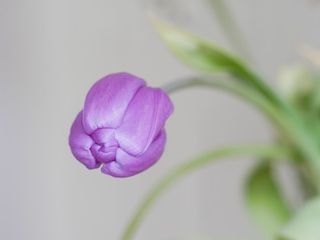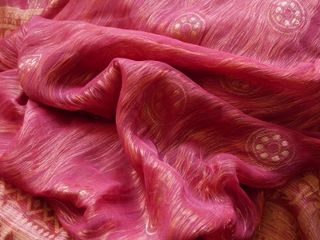Why you can trust TechRadar
While I may have found a few niggles, ergonomically speaking, when using the GX80, I certainly came away very impressed by its performance. The image quality and autofocus performance in particular really did win me over.
Its also worth noting that Panasonic includes a huge range of creative filters and up to four-frame multiple exposure options – features such as these are increasingly popular. The creative filter modes are great fun, and offer a host of options for those wanting to experiment. I knew from past experience that my favourite would be 'silky monochrome', but I was also impressed with the HDR mode, which produced far more natural-looking images than I've seen from many other cameras. It would genuinely be useful when, say, shooting a building against a bright white sky.
The panorama and time-lapse functions both work really well, and I enjoyed the 'stop motion animation' function. This enables you to shoot a series of stills of an object, while gradually moving said object between frames. From this, you can quickly and easily create an animated video in-camera. You take each frame as and when you're ready, so there is no race against the clock. Alternatively, you can automate the interval between each frame, but I'd be inclined to use time-lapse for automated sequences.

Click here to see the full-resolution image

Click here to see the full-resolution image
Panasonic's new 5-Axis Dual IS works superbly. I found that I could get pretty consistent results with speeds as low as 1/25 sec at 150mm (300mm equivalent).
As is the norm with Panasonic cameras, evaluative metering was accurate and produced consistently well-exposed images. And if you do overexpose or underexpose, the JPEG files have a fair bit of latitude in them, particularly at lower sensitivities; the relatively modest resolution of 16MP has no doubt helped ensure good dynamic range.
Auto white balance (AWB) tends towards the cool side, particularly in sunny conditions, but personally I prefer this to overly warm images. If you're shooting JPEG only, then I'd recommend switching to Daylight WB for sunny scenes. In overcast conditions or in shade it's also worth trying the respective presets for each, although you may find them a touch on the warm side. Overall, though, I found the tones and colours of the GX80's files extremely pleasing.
In AFS mode the autofocus is remarkably responsive and accurate, rarely failing to lock onto its intended subject. AFC and tracking also works well and, for the most part, did a pretty good job of holding onto my dog running towards me at full tilt, in tricky conditions with a mix of sun and shade; unsurprisingly, results were more consistent still when tracking a subject running from side to side.

Click here to see the full-resolution image

Click here to see the full-resolution image
Focus peaking for manual focus works well, as does focus assist, with your subject automatically enlarged on the screen to assist fine corrections – the level of detail is really high, and it makes manual focusing a simple procedure.
As tends to be the case with newer cameras, a huge array of focusing options are included. Arguably, some of these may be a little more complex than many users will want; however, there's nothing that says you have to use every option, and the amount of customisation is welcome, enabling you to change the shape, area and size of focus point or area.
I found the face/eye detection focus mode sometimes struggled a little in low or overly contrasty light but, overall, I was hugely impressed by the GX80's ability to focus automatically, and the way it assists with manual focusing.
Panasonic definitely has an edge over many of its competitors given its willingness to include 4K video in so many of its cameras, including the GX80. Furthermore, the three 4K burst modes, which enable you to extract stills from the 30fps footage, are not only fun to use but will be of real interest to wildlife and action photography enthusiasts. Although the resulting JPEG files are only 8MP, the quality is very good and would allow you to produce an A3 print.

Click here to see the full-resolution image

Click here to see the full-resolution image
There are a range of picture modes to choose from. Standard JPEGs have very pleasing and natural colours, with the Scenery setting giving you slightly more vivid colours and a little more contrast. Panasonic has also chosen the GX80 to introduce a new L Monochrome mode, which produces more punchy black and white images than the standard Monochrome setting.
As mentioned above, having restricted the GX80 sensor to only 16MP Panasonic has ensured noise performance is very good indeed. Luminance noise is only really noticeable in raw files at ISO3200 and above, but only when viewed at 100%, and it's easily minimised by applying a little noise reduction. Even images shot at ISO6400 retain an impressive level of detail.
For JPEGs I tried turning noise reduction off and, again, found files to be remarkably clean and detailed at ISO1600, even if the raw files do just have the edge. Details in JPEG files start to get a bit smeary by ISO6400, with noise becoming obvious at ISO12,800 and above. In-camera noise reduction is quite aggressive, so I'd recommend turning it off, or at least reducing it from the factory setting.

Click here to see the full-resolution image

Click here to see the full-resolution image
Although the JPEG quality is very good indeed, raw files inevitably have a finer level of detail, but the real-world difference is quite slight at lower sensitivity settings. Even at ISO1600 the difference is slight, but at ISO 6400 and above you'll certainly benefit from shooting raw, both in terms of resolution and colour fidelity. I was unable to find any trace of moire in the images I took, including those of patterned material.
The optional 12-32mm kit lens performs surprisingly well. Of course it can't truly compete with pro-grade lenses, and with a variable aperture of f/3.5-5.6 it's quite slow, but I found it to have quick and reliable AF. Its macro capabilities are somewhat limited and, given that maximum focal length of 32mm, reach isn't as good as in larger kit lenses; it's also rather prone to flare. However, it is able to resolve a good level of detail, and it's extremely lightweight and compact.
